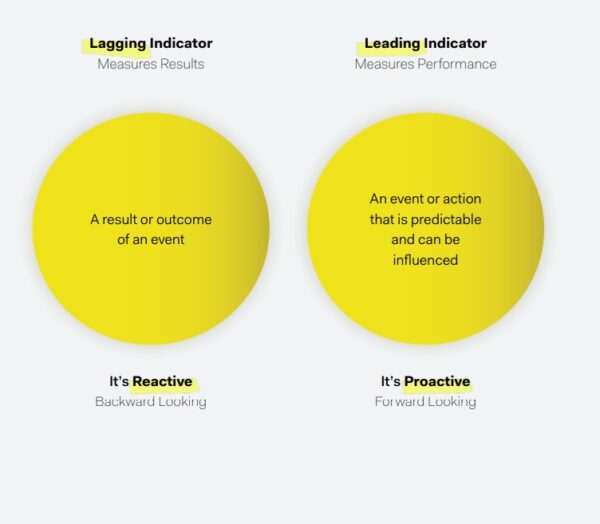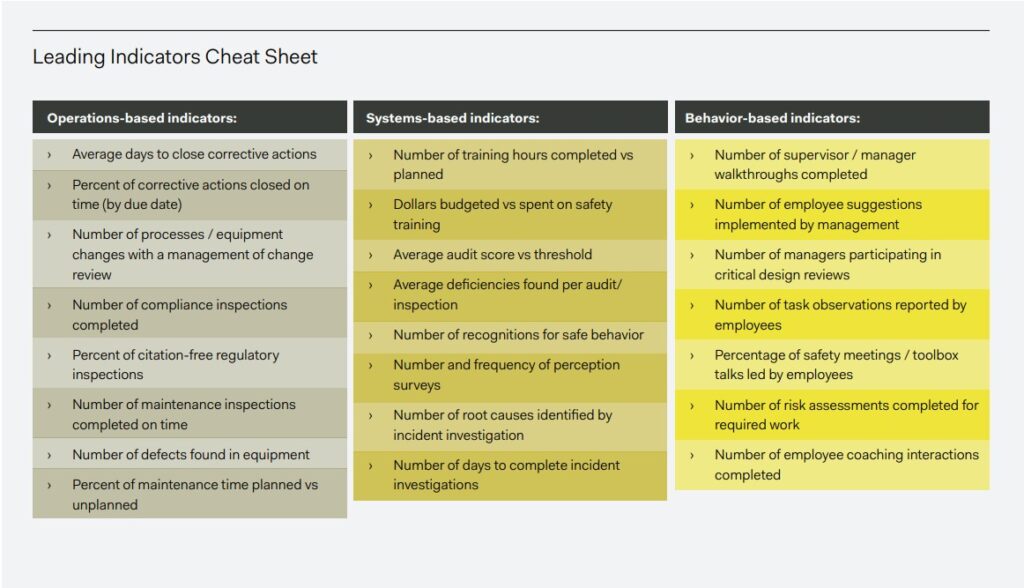More and more, organizations are beginning to understand the limitations of relying solely on backward-looking metrics to inform their safety strategy. Fortunately, business leaders are starting to explore how leading indicators can help them more accurately assess their safety performance in real-time, and better inform their decision-making so that risks are addressed before they can translate into harm.
There’s too much at stake to simply wait for incidents to occur so you can find out what else you should be doing to improve safety performance. To embed the concept of proactive risk management into your organizational DNA, your company must change the way it defines safety success, and also how it measures its progress to reach it.
Related: Back to Basics: How to Simplify Your Safety Program to Achieve Real Results
Understanding the Different Types of Safety Indicators
Lagging Indicators
These are outcome-oriented metrics. They measure the result of a process or action. As such, they cannot inform the organization on the current state of its systems, controls or actions to manage risk, nor indicate the presence of incident precursors.
Leading Indicators
On the other hand, leading indicators are performance-based metrics. They provide proactive insights into the stability of safety systems and often act as an early warning sign of weaknesses in critical controls that could lead to a future failure. Since leading indicators are often predictive of future states, they are directly influenceable and actionable, which makes them hugely beneficial to safety practitioners, enabling effective decision-making on health & safety matters.

Examples of Health and Safety Leading Indicators
Leading indicators can be broken down into three categories: operations-based, systems-based, and behavior-based.
Let’s take a quick look at some common examples used in each category:

You Might Also Like: Improving Safety: Where to Focus Your Attention for Maximum Impact
Key factors to consider when selecting and implementing leading indicators
1. Executive sponsorship and support
One of the key factors that can quickly derail an organizational shift toward leading indicators is the absence of senior-level support. or executives who have traditionally measured safety success based on injury rates, getting them to adopt more leading indicators can be a tough sell. It’s therefore essential that the health and safety professional clearly educates executives on how these indicators contribute to stronger safety cultures and operational excellence.
2. Selecting actionable leading indicators
There is no one-size-fits-all approach to creating good leading metrics. Measures need to be specific to your organization’s culture, goals, key risks, and operational challenges. Ideally, there should be a relationship between each leading indicator selected, and a lagging indicator they ultimately influence.
3. Data collection, integration, and analysis
Beyond selecting the right indicators, your organization will need to figure out how to collect the data to sustain these metrics. Technology is invaluable in helping employers efficiently collect, aggregate, and analyze data needed to calculate metrics in real-time, and reveal the key insights that will guide decision-making.
4. Data visibility
For your organization to derive full value from its indicators, you must not only collect and analyze the data, but also transform it in a way that’s immediately visible and easily understandable to your key stakeholders.
Next Steps
By selecting and implementing the right leading health & safety indicators, your organization can empower itself with data-driven insights that will lead to more sustainable performance and world-class safety cultures.
To learn more about what to consider when selecting indicators for your organization, check out Measuring Performance: A Guide to Health & Safety Leading Indicators.











